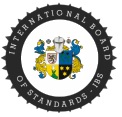Business Certification - Continuing Education




Links
GBM ™ Continuing Education
The Graduate Board of Management ™
GBM recognizes the responsibility of Business professionals to maintain skills and new knowledge. Here are the methods of achieving the continuing education each year.
- Attend a seminar or course from an ABA, AACSB, ACBSP or EQUIS accredited business or law school
- Teach a course related to your certification.
- Attend a relevant Conference.
- Publish a paper related to your certification.
Read about Certifications, and Apply